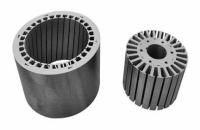
Partial discharge is a common latent fault in transformer cores and insulation systems. It typically occurs in areas with high localized electric field intensity, such as insulation defects, irregular contact surfaces, or material inconsistencies. Partial discharge, accompanied by energy release, causes cumulative damage to the insulation system. Over prolonged operation, it may lead to core degradation, insulation failure, or even severe equipment malfunction. Therefore, timely detection and effective control of partial discharge are critical to ensuring the safe operation of transformers.
Partial discharge detection is a key method for assessing the health of transformers. Currently, detection methods are categorized into offline and online techniques. Offline detection, mainly used during maintenance shutdowns, includes pulse current measurement, ultrasonic testing, and optical imaging, which are effective in diagnosing the specific location and nature of partial discharge. Online detection, on the other hand, is applied during operation. It utilizes high-frequency current sensors, ultra-high-frequency (UHF) sensors, or gas analysis devices to capture signals or chemical reactions associated with partial discharge in real-time, enabling fault prediction and preventive maintenance.

Signal processing and analysis techniques play a central role in achieving efficient partial discharge detection. Due to the complexity of discharge signals and background noise, modern methods such as wavelet transforms, fast Fourier transforms (FFT), and feature extraction algorithms are widely used for signal identification and classification. Additionally, the integration of artificial intelligence has enhanced the classification of fault patterns and the analysis of discharge causes, providing new insights for improving transformer maintenance strategies.
Measures to control partial discharge include optimizing core and insulation structure design, improving manufacturing processes, and strengthening operational monitoring and regular maintenance. In terms of materials, selecting insulation materials with superior voltage resistance and optimizing coating processes can effectively reduce localized electric field intensity. Furthermore, during operation, adjusting load and voltage levels to avoid prolonged high-stress conditions can decrease the likelihood of partial discharge occurrence.
The detection and control technologies for partial discharge play a vital role in the lifecycle management of transformers. Through scientific monitoring methods and effective control strategies, these technologies not only extend equipment lifespan but also reduce operational costs and accident risks, providing strong support for the safe and stable operation of power systems.
As the world continues to transition to renewable energy, the demand for more advanced transformer technologies will increase. Smart transformers, for example, will be critical in future energy grids, as they can dynamically adjust voltage levels based on real-time energy production and consumption data.
Analysis of the Impact of Magnetostrictive Effect on Transformer Core Performance
2024-12-30Demand for electrical steel is expected to increase by 3% year-on-year in 2024
2024-04-10Application of stainless steel in various industries
2021-05-20Effect of laser cutting on magnetic properties of non-oriented electrical steel
2024-01-24Opportunities and challenges faced by China's stainless steel industry
2022-12-15Hongwang’s colored stainless steel produce standard
2020-08-21






